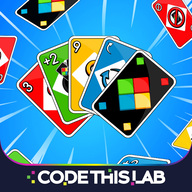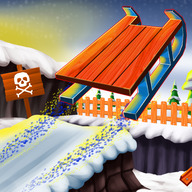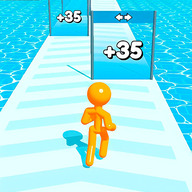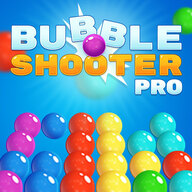The PvP Arena: Understanding Combat, Raiding, and Player Dynamics in Rust’s Brutal World
At its core, Rust is an unadulterated PvP (Player versus Player) arena, a brutal and exhilarating test of skill, strategy, and nerve. While survival mechanics provide the framework, the heart of the gameplay beats loudest in its unpredictable player interactions, culminating in intense combat encounters and devastating base raids. This isn’t a game for the faint of heart; every moment spent gathering resources or building a base is done with the understanding that another player, or an entire group, could be lurking, ready to take everything. Understanding the nuances of Rust’s combat system, the psychology of raiding, and the ever-shifting player dynamics is crucial for anyone hoping to thrive in its unforgiving, player-driven world.
Combat in Rust: A Test of Skill and Gear
Rust’s combat is often described as unforgiving, favoring skill and tactical awareness above all else.
- Weapon Tiers and Effectiveness: Combat scales dramatically with weapon tiers. Early game involves crude weapons like bows, crossbows, spears, and revolvers, where aim and movement are paramount. Mid-to-late game shifts to more powerful firearms like shotguns, custom SMGs, semi-automatic rifles, and the iconic AK47. Each weapon has unique recoil patterns, bullet velocity, and damage profiles that players must master.
- Recoil Control and Spray Patterns: Unlike many shooters, Rust features complex and often difficult-to-master recoil patterns for its firearms, especially the automatic ones. Practicing spray control (pulling the mouse down in a specific way to compensate for recoil) is essential for effective mid-to-long-range engagements and is a major skill differentiator between players.
- Armor and Protection: Players can craft and equip various tiers of armor (wood, roadsign, heavy plate) that reduce incoming damage. However, armor often comes with movement penalties, forcing a trade-off between protection and mobility. Understanding damage types and armor effectiveness is crucial for loadout optimization.
- Healing and Medical Supplies: Combat often results in injuries like bleeding or broken bones, requiring quick use of medical items (bandages, medkits, syringes). The ability to heal mid-fight can turn the tide of an engagement, adding another layer of resource management and quick decision-making.
- Movement and Positioning: Mastering Rust’s movement (sprinting, crouching, leaning, jumping) is vital for dodging incoming fire, flanking opponents, and securing advantageous positions during firefights, especially in open-field PvP. Terrain knowledge is also a significant advantage.
- The Element of Surprise: Due to the open-world nature, ambushes are common. Being aware of your surroundings, listening for footsteps, and using cover effectively can mean the difference between initiating an attack and being caught off guard.
Raiding: The Ultimate Expression of PvP Dominance
Raiding is the pinnacle of Rust PvP, a high-stakes, high-reward endeavor that defines much of the game’s competitive loop.
- Objectives of a Raid: The primary goal of a raid is to breach an enemy base, eliminate its defenders, and steal all valuable loot (weapons, resources, HQM, sulfur, components). It’s the ultimate power play to assert dominance and progress quickly by acquiring opponents’ hard-earned items.
- Raid Costs: Raiding is expensive. It typically requires significant amounts of explosives (C4, Rockets, Satchel Charges, Explosive 5.56 Ammo), which are high-tier crafted items requiring vast amounts of sulfur. The “cost to raid” a base (how many explosives are needed) is a crucial metric for both attackers and defenders.
- Offline Raiding vs. Online Raiding:
- Offline Raiding: Attacking a base when its owners are not online. While often frowned upon by some communities, it’s a common and effective strategy as there’s no immediate defense.
- Online Raiding: Attacking a base while its owners are actively defending. This is far more challenging and skill-intensive, leading to epic PvP battles and some of Rust’s most iconic moments.
- Raid Tools and Strategy:
- Explosives: The primary means of breaching fortified walls and doors.
- Battering Rams/Jackhammers: Less common, but can be used for less fortified walls.
- Raid Towers: Temporary structures built near a base to gain height advantage or bypass certain defenses.
- Cover and Push: Coordinated teams use smoke grenades, suppressive fire, and tactical pushes to breach defenses and eliminate defenders.
- Counter-Raiding and Raid Defense: The defenders’ role is to repel the raiders. This involves fortifying the base (as discussed in Article 2), using turrets and traps, and actively engaging the attackers. Often, other groups on the server will “counter-raid,” joining the fight to steal loot from either the attackers or the defenders, adding further layers of chaos.
Player Dynamics: Alliances, Betrayal, and Social Hierarchy
Rust’s PvP isn’t just about shooting; it’s about the intricate and often ruthless player dynamics.
- Groups and Clans: Forming a group or clan provides a significant advantage in Rust, offering mutual protection, shared resources, and coordinated raids or defenses. However, internal conflicts and betrayals can also occur within groups.
- Friendlies and Hostiles: Players quickly learn to distinguish between potential friendlies (often indicated by proximity, lack of immediate aggression, or voice chat) and hostiles (anyone with a weapon drawn). This constant assessment drives decision-making.
- Griefing and Toxic Behavior: The open-ended nature means that players can engage in griefing (destroying another’s work for no strategic gain) or verbal abuse. Navigating this aspect is part of the Rust experience, leading many to seek out specific server communities.
- Emergent Narrative: The spontaneous interactions, epic raids, and desperate last stands create unique, emergent stories for every player, making Rust a deeply personal and unforgettable PvP journey.
Rust’s PvP arena is a relentless, high-stakes environment where every encounter is a gamble and every raid is an epic confrontation. Mastering combat mechanics, understanding the psychology of your opponents, and constantly adapting to the fluid player dynamics are the keys to not just surviving, but dominating in this brutal survival simulation. It’s a game that strips away niceties, exposing the raw essence of human interaction under pressure, making every victory hard-earned and every defeat a harsh lesson.
What is your preferred PvP strategy in Rust when encountering another player: immediate aggression, attempting negotiation, or stealthy evasion?

















Angela
added 3 days agoI want to play with my friends
Tommy
added 1 hour agoThis game looks super fun. Is it available on mobile?
Lisa
added 5 minutes agoI really love the graphics. So impressive!
Mark
added 2 days agoWhere can I download this game?
Jenny
added 6 hours agoJust tried it out. Totally hooked already!
Steve
added 3 minutes agoMultiplayer mode needs improvement, but overall great!
Sophie
added 8 hours agoReminds me of the old-school games. Love the nostalgia.
James
added 1 day agoCan someone recommend a similar game?
Emily
added 9 minutes agoThis deserves more attention. It’s a hidden gem!
Kevin
added 4 days agoServer lags sometimes. Hope devs fix it soon.
Alice
added 2 hours agoIs there a story mode or only online battles?
Daniel
added 10 hours agoBest free game I’ve played in a while. Props to the devs!